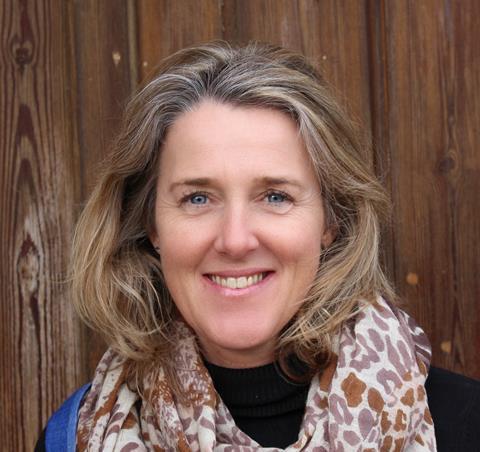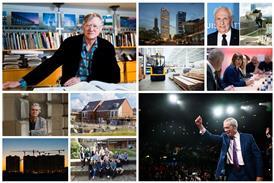As new legislation threatens to weaken habitat protections, Sophie Thompson asks what it would take to plan with respect for both people and the natural world

Earlier this year, Darlington Borough Council declared a nature restoration emergency. The move was described by advocates as a win for nature, driving enhancement of depleted green spaces.
What’s not to applaud? And yet, council opposition called out the motion as daft, arguing that resources would be better focused on supporting people facing inequalities, “not pie-in-the-sky green and woke agendas”.
So, when did wanting to protect and enhance nature become ‘woke’? While widening inequality needs to be reversed, at speed, how can that happen by being pitted against nature?
Blame it on the bats
Concerns about how nature is being viewed within the political landscape have come to a head over the government’s Planning and Infrastructure Bill.
There’s widespread agreement that the planning system needs to change. However, the RSPB raised the alarm, describing Part 3 of the Bill as a “licence to destroy nature”.
The Office for Environmental Protection welcomed the legislation with the caveat that it needs to be well implemented, but it also called parts regressive because there were fewer protections for nature than under existing law. The Guardian went further, warning of a possible ‘pay to pollute’ scenario which could threaten up to 5,000 sensitive and rare habitats and landscapes, including tidal wetlands, ancient woodlands and species strongholds.
The crux is we need to recognise ourselves as part of the natural world, rather than separate from it
Concerns hinge on the move away from the site-by-site mitigation hierarchy of avoid, minimise, mitigate and only then offset, to larger-scale, strategic, off-site investment. A ‘nature restoration levy’ from developers would provide the contributions.
No one is arguing that the existing framework for protecting habitats is perfect. If it was, we wouldn’t be in the lowest 10%of the Biodiversity Intactness Index or ranked the ‘most nature-disconnected country in Europe’. And there are benefits to a more strategic approach.
But what’s worrying environmentalists is that just when we should be doing everything possible to address catastrophic biodiversity loss, the government’s legislation failed to convince even its own advisers. Maybe the problem stems from bundling nature with NIMBYism and seeing it as a block to housing growth, instead of being part of a wider vision for a better future.
New amendments to the Bill appear to be steps in the right direction, but do they go far enough? Environmental organisations still see site habitats as being vulnerable.
The rules of respect
The crux is we need to recognise ourselves as part of the natural world, rather than separate from it, and design accordingly. This approach isn’t easy, but managed well, it can drive creativity and wider outcomes, and it can prevent further polarisation, which is where “woke” comes in.
By moving away from binary choices (bats before people, people before bats) we can arrive at more rounded and successful solutions.
Disconnect from the natural world fuels this polarisation. Why should people care about something they don’t have much contact with?
Growing ‘nature blindness’ means we can’t name birds, trees and shrubs anymore. Words like catkin and crocus have been replaced in the Oxford Junior Dictionary by cut and paste and celebrity.
Is one of the risks with the proposed Environmental Delivery Plans that we weaken doorstep nature in favour of a strategic site, which could be a long way away?
Compounding this disconnect is the fact that for too long, nature has been viewed just as a resource at our service. Author Robert Macfarlane calls this a failure of the imagination.
What needs to happen for the natural world to thrive, and for perceptions to shift towards respect?
In Is A River Alive?, Macfarlane points to how, far from seeing rivers as a life force, we pump them with our effluent from industrial processes and intensive farming. Every river in England has been polluted beyond legal limits, with some now blithely signposted as untouchable, their stones smothered in slime and filamentous algae.
At the same time, we are learning more about ecological economics and its critical importance to public and planetary health. What needs to happen for the natural world to thrive, and for perceptions to shift towards respect? For nature to be recognised as friend, not foe?
Things can change if we ask new questions. For example, how can spatial planning deliver greener growth?
An answer rooted in respect might lead to the strengthening of local environmental protections while, simultaneously and together, implementing all that promised strategic nature restoration across the country at scale.
Another question might be, what does it mean to belong within a natural ecosystem, rather than assume command? An answer rooted in respect would recognise what it means for rivers to be alive, as well as why they are dying, and what it would mean for them to have rights.
We could see what flows to benefit people from such reimagining, in terms of law, culture and politics.
When all those involved in placemaking sit around a table at project inception, should the question be, ‘In meeting the needs of people and nature, what is the natural world telling us about where we might start?’
One thing is clear. Nothing good will come of pitting nature against fairness and equality. Calling nature woke is a joke and a provocation that will take us nowhere, fast.
Postscript
Sophie Thompson is Head of Public Realm and a board member at LDA Design
















No comments yet